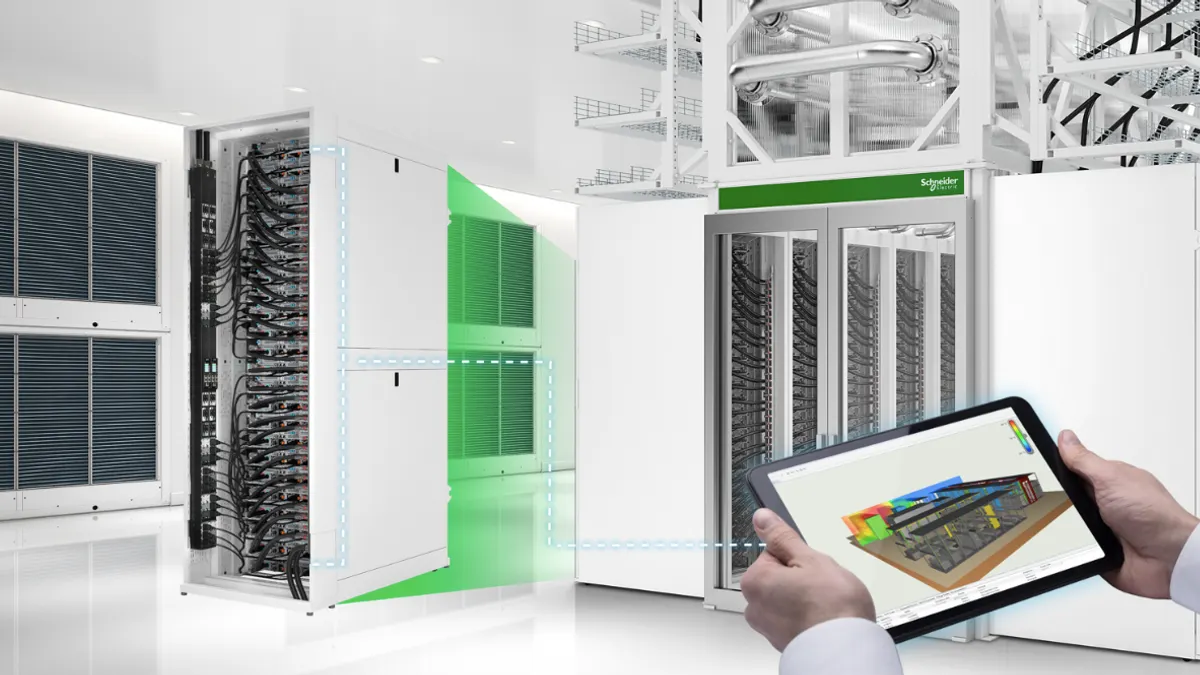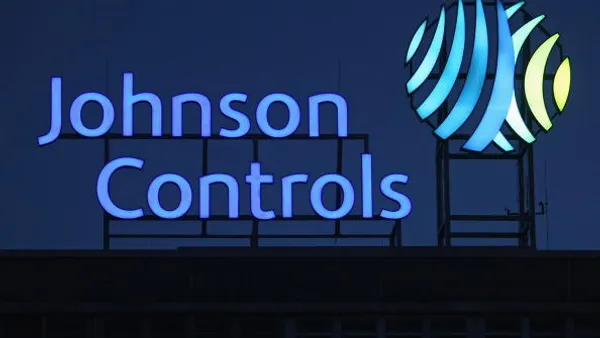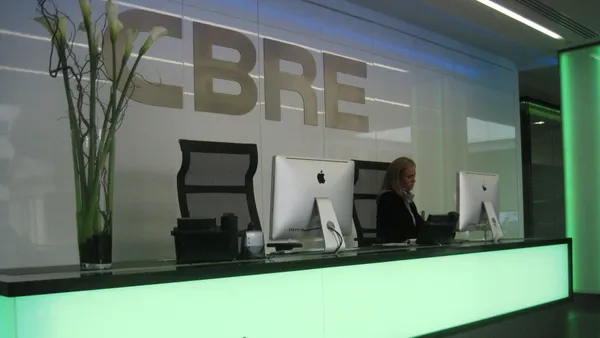Dive Brief:
- North American data centers and networks helped drive growth “aligned with expectations” in the first half of 2025, Schneider Electric said Thursday in an earnings update.
- The energy management giant expects growth to accelerate in the second half of the year as it adjusts to U.S. tariffs. It sees double-digit annual growth for its data centers and networks segment and mid- to high- single-digit growth for its infrastructure and industry segments through 2027.
- Two recent moves will bolster Schneider’s competitive advantage in the data center business, executives told investors and analysts on an early-Thursday call: its acquisition of a majority stake in cooling solutions provider Motivair earlier this year and a partnership with NVIDIA to develop optimized data center reference designs.
Dive Insight:
Schneider’s revenues grew 8% and net income increased 6% in H1 2025, the company reported. North America was its strongest geography, with 13.8% organic revenue growth propelled by a 15.9% jump in revenue from its energy management group, which includes its data centers and networks business.
Continued strong performance in Schneider’s data center and networks vertical appeared to validate executives’ comments earlier this year that the emergence of more efficient AI models like DeepSeek would not meaningfully impact technology companies’ investment plans.
CEO Olivier Blum said the Motivair acquisition would help Schneider maintain its “leading position” in the space with a full data center efficiency solution “from grid to chip and chip to chiller.” In its partnership with NVIDIA, the company expects to work on “what will be their next chips [and] what are the designs we need to provide [to] make sure data centers are more efficient” using those new chips, Blum said.
Schneider announced a separate collaboration with ETAP earlier this year to produce digital twins that simulate data center operations, helping developers and future occupants optimize efficiency and performance before facilities are built.
In its buildings vertical, Schneider’s EcoStruxure for Buildings platform and majority ownership of building management software provider Planon helped it slash key customers’ building energy consumption to around 30% of the global average for comparable facilities, the company said. In case studies it shared, an upgrade to an uninterrupted power unit at a cancer hospital in India helped it improve energy efficiency by 30% and an occupancy-based room conditioning system at a London corporate headquarters helped it achieve 22% savings in operational energy use and carbon intensity.
The EcoStruxure solutions span a range of onsite power management, efficiency and decarbonization solutions for commercial and industrial facilities, the company says.
Last year, for example, Schneider unveiled a battery energy storage system to support self-contained microgrids that can reduce heavy power users’ peak energy demand — a costly operational expense. Data center developers and operators are likewise turning to flexible onsite power solutions that “island” from the main grid to bypass grid connection queues that can stretch for years.
Business environment
Schneider said unfavorable foreign exchange dynamics reduced Schneider’s global group revenues by 2.1%, mainly due to weakening of the U.S. dollar, Indian rupee, Turkish lira and Mexican peso relative to the euro, the home currency of the France-based company. Schneider has substantial manufacturing operations in the United States, India, Turkiye and Mexico.
Economists blame the decline in the U.S. dollar this year on a “risk premium” caused by mounting federal debt and the Trump administration’s unpredictable trade policy.
U.S. tariffs and inflation for raw materials were further headwinds for Schneider in the first half, offsetting productivity gains in a trend that Chief Financial Officer Hilary Maxson said could continue through the end of 2025.
“Depending on [the] timing of various tariff actions in the U.S., we’d now expect our gross margin progression for the full year could be somewhat negative,” Maxson said Thursday.
But Schneider’s "demonstrated pricing power” ought to help the company “fully offset the impacts of tariffs and inflation over the next quarters,” she said.
Schneider mounted a quick response to tariffs during the first months of the Trump administration, but the benefits may not be apparent until the company reports its second-half performance early next year, Blum said.
Schneider’s actions so far include “most of the price increase” that customers will see as a result of the tariffs imposed so far, though “if there are further actions to be implemented depending on the latest news, of course we will continue to do more,” he said.











